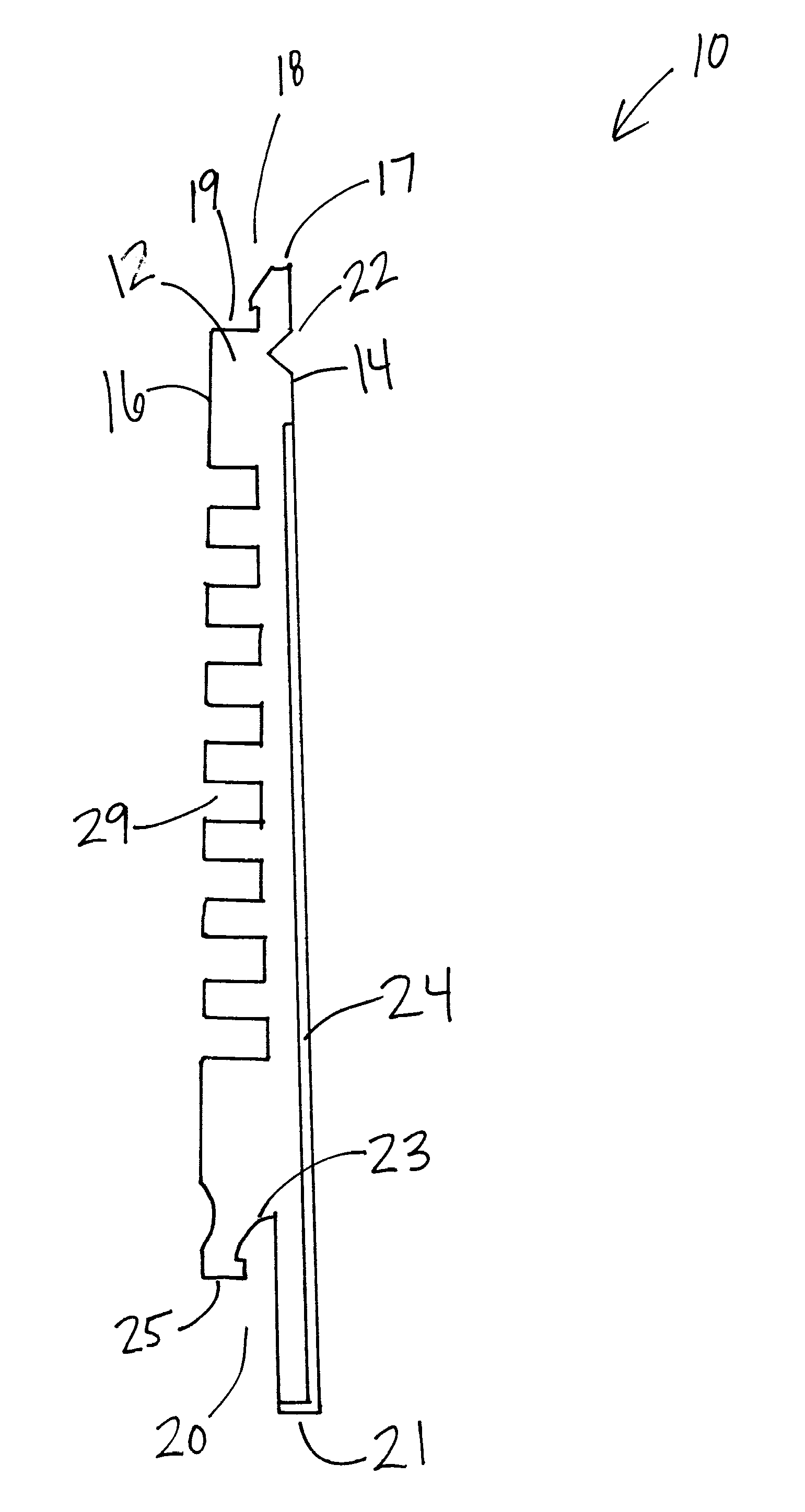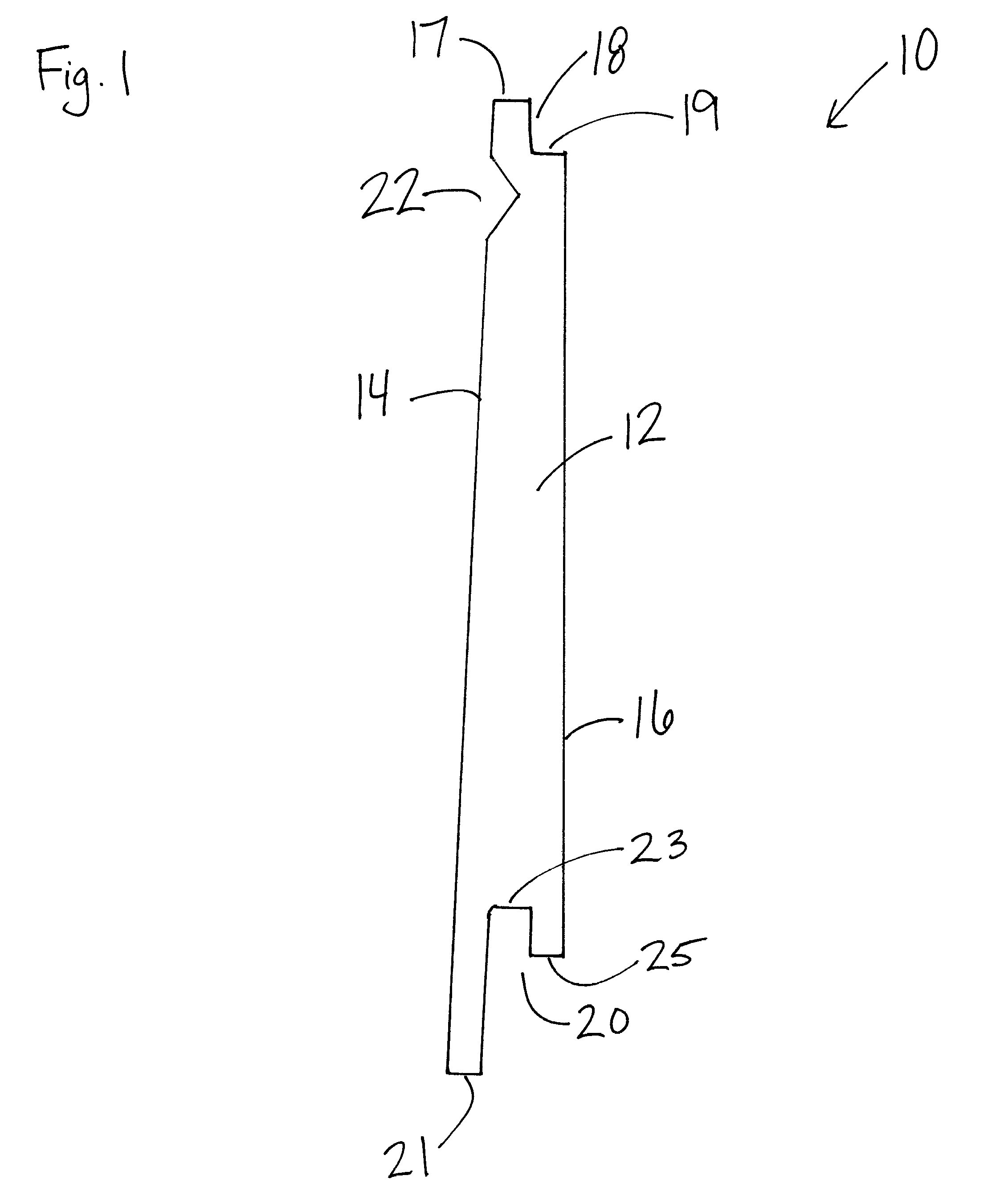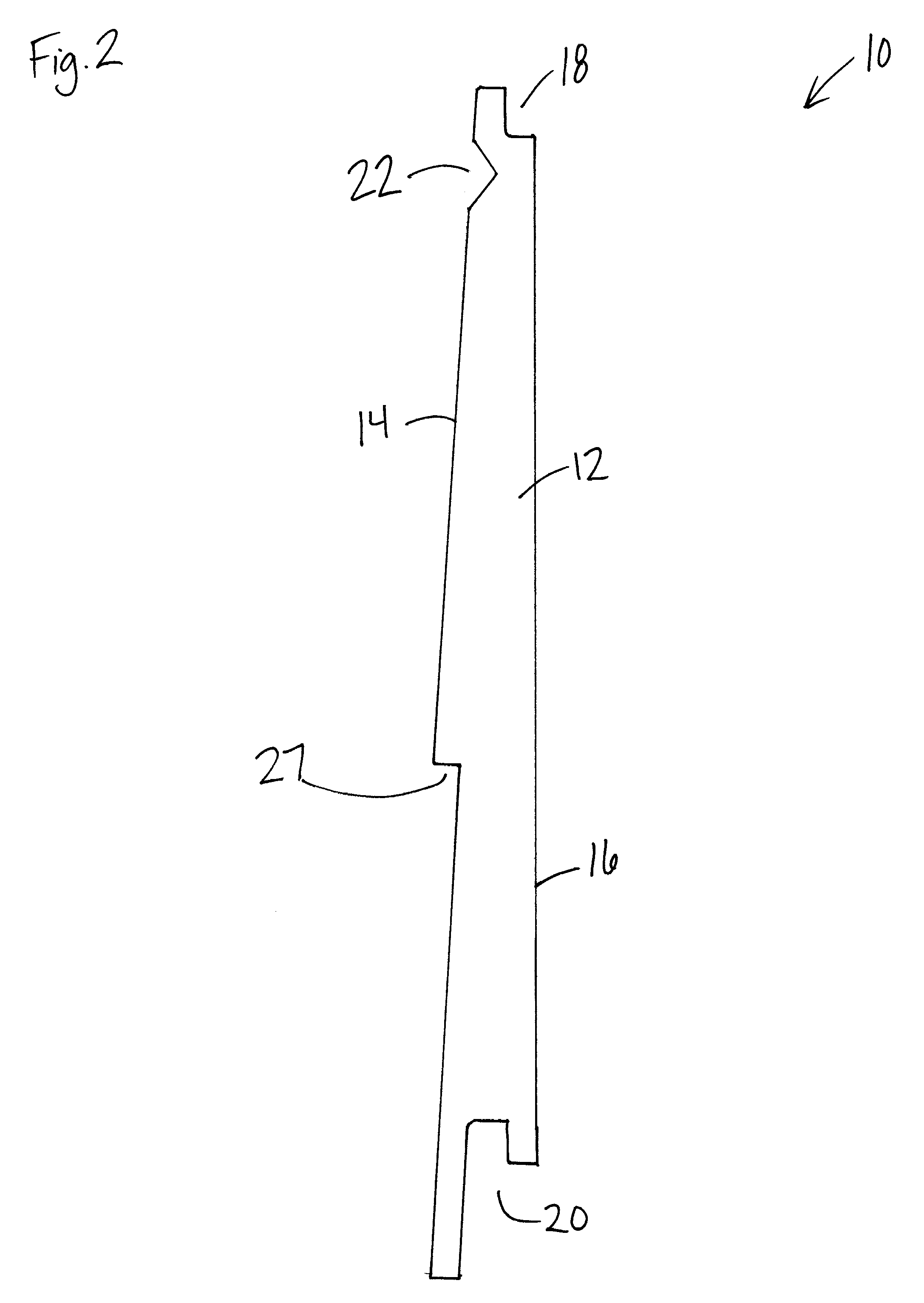Interlocking panel siding
a technology of interlocking panels and siding, which is applied in the direction of roofs, coverings/linings, constructions, etc., can solve the problems of laborious installation of siding, increased installation and purchase costs of siding, and laborious installation of certain kinds of siding, so as to achieve easy assembly, installation, and maintenance free
- Summary
- Abstract
- Description
- Claims
- Application Information
AI Technical Summary
Benefits of technology
Problems solved by technology
Method used
Image
Examples
Embodiment Construction
[0036]FIG. 1 illustrates an example of an interlocking panel 10. As shown in FIG. 1, the interlocking panel includes a body 12 with a front face 14 and a rear face 16. The front face 14 is the exterior of the panel 10, which faces the elements, and the rear face 16 will be the interior of the panel 10 that faces the wall of the house, stud, sheathing, or other structure. The interlocking panel 10 includes a top edge 18 and a lower edge 20. The top edge 18 includes a top front edge 17 that extends above a top rear edge 19. The configuration of the top edge 18 allows it to connect to the lower edge 20 when the interlocking panels 10 are stacked adjacently. The lower edge 20 includes a bottom front edge 21 extending below a recessed bottom middle edge 23 and bottom rear edge 25, which falls between the bottom front edge 21 and the bottom middle edge 23. Accordingly, the top edge 18 connects by interlocking to the lower edge 20 when stacked adjacently.
[0037]As shown in FIG. 1, the inter...
PUM
 Login to View More
Login to View More Abstract
Description
Claims
Application Information
 Login to View More
Login to View More - R&D
- Intellectual Property
- Life Sciences
- Materials
- Tech Scout
- Unparalleled Data Quality
- Higher Quality Content
- 60% Fewer Hallucinations
Browse by: Latest US Patents, China's latest patents, Technical Efficacy Thesaurus, Application Domain, Technology Topic, Popular Technical Reports.
© 2025 PatSnap. All rights reserved.Legal|Privacy policy|Modern Slavery Act Transparency Statement|Sitemap|About US| Contact US: help@patsnap.com



